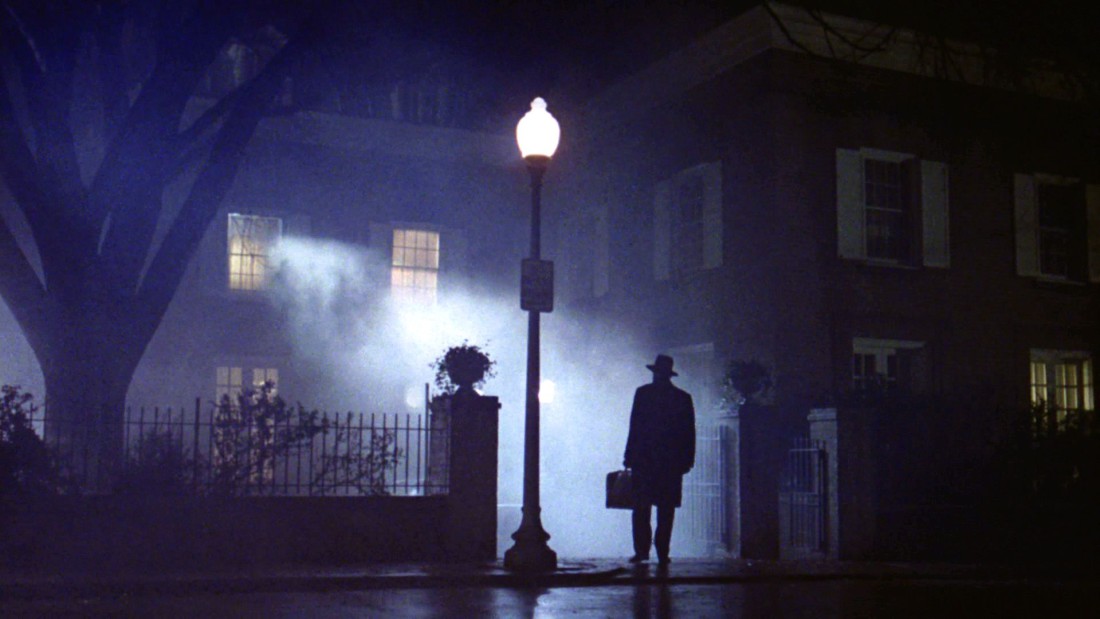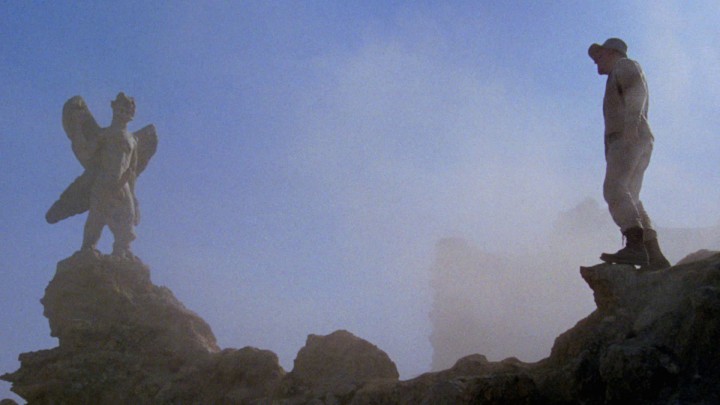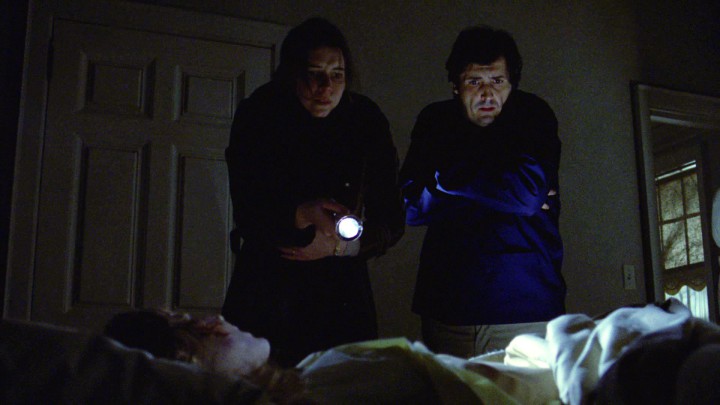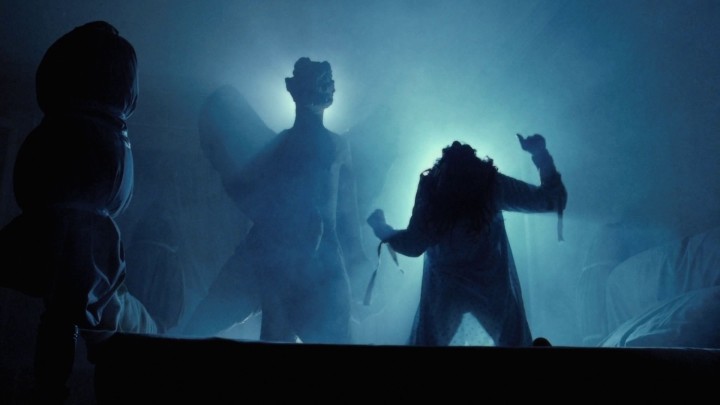Most of The Exorcist’s horrors hold up quite well today, though perhaps the biggest single jolt of all is the simplest shock effect in the film — the telephone suddenly ringing when Father Damien Karras is listening to the tape of the possessed Regan’s rantings. It’s a lesson that Friedkin could have applied elsewhere in the film to great profit, because the least effective and hokiest moments in The Exorcist are also its most elaborate ones. The rotating head looked absurd and phony when the film was new, and time has not improved it, though it may still work a crowd.
Where the director’s cut — which in reality is more the writer’s cut — really scores is in the restoration of much of William Peter Blatty’s more deep-dish thematic concerns. Blatty’s highly personal, Catholic mysticism suffered from Friedkin’s decision to play up the film’s roller-coaster thrills. It may have made good box-office sense, but it took a generally thoughtful story about the mysteries of faith, the nature of sin, guilt and redemption (and our own humanity) and turned it into a more simplistic spook show. Oh, the book was still scary — I remember having to put it aside after one part when I was 19 — but (to put it crudely) Blatty had ideas; Friedkin had split-pea soup — a significant difference. Not to diminish Friedkin’s mastery, mind you — his ability to create and sustain a sense of dread is unparalleled. (Just look at the film’s first 10 minutes — the scenes in Northern Iraq — to see what I mean.) But with the full cut we have a film that has both ideas and split-pea soup, and it’s definitely deeper and more disturbing, as a result. Blatty’s concerns and preoccupations are both fascinating and worthwhile in this version of The Exorcist, which now seems more of a piece with his own The Ninth Configuration and The Exorcist III.
Oh, sure, Linda Blair is still amateurish in many scenes, and it’s the overdubbed voice of character actress Mercedes McCambridge during the possession scenes that gives Blair’s performance its effectiveness. (The original idea was not to credit McCambridge and her onscreen credit is just a “Thanks to” nod.) Lee J. Cobb’s police detective, Kinderman, is good, but he’s so totally eclipsed by George C. Scott’s portrayal of the character in Exorcist III that he doesn’t come across as strongly as he might. That said, even in this expanded version, Cobb’s character is given somewhat short shrift, though he does wonders with what he has to work with. The rest of the cast, however, could scarcely be bettered. It’s a delight to be reminded what a dynamic performer Ellen Burstyn can be. And it’s something of a puzzling disappointment to wonder why Jason Miller never had the career his portrayal of Father Karras suggested he should have had.
The Asheville Film Society is showing The Exorcist Wednesday, Oct. 21, at 8:00 p.m. at The Carolina Asheville as part of the Budget Big Screen Series. Admission is $6 for AFS members and $8 for the general public. Xpress movie critics Ken Hanke and Justin Souther will introduce the film.






It’s good to see someone point out the hokeyness of the head-spinning scene, which would have been bad enough once, but used twice (!). I was always somewhat amazed that audiences seemed to accept the non-fatal results of that; if Blair’s head had detached itself and flown around the room to return to her torso and reattach itself, it would not have been less plausible. Although the head-rotation is in the book, Blatty makes it clear that it is a delusion forced on the mother by the demon, brilliantly emphasizing the way the movie director was murdered. Friedkin’s version is entirely too literal.